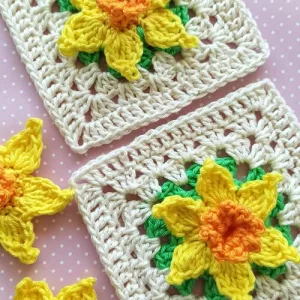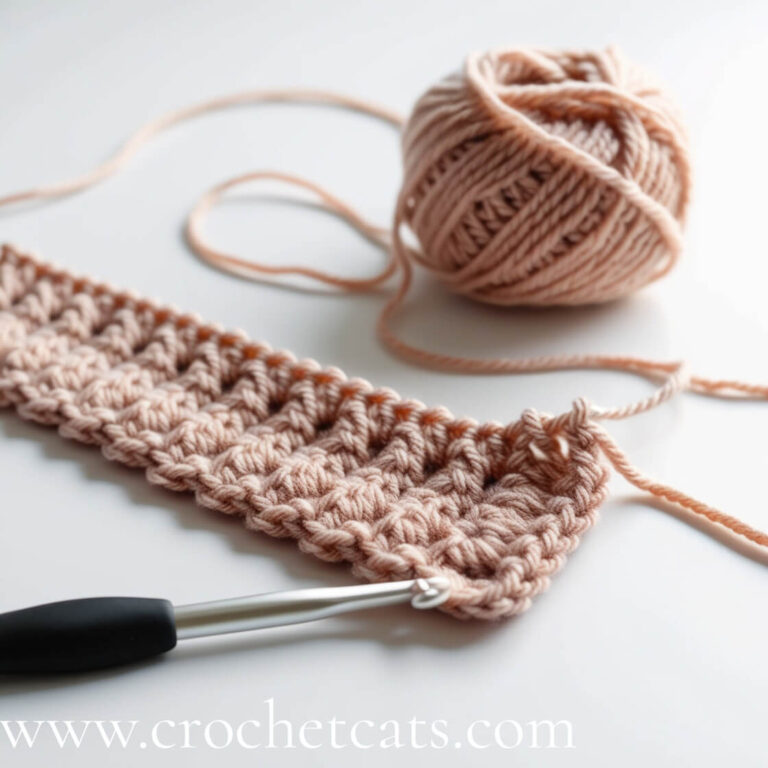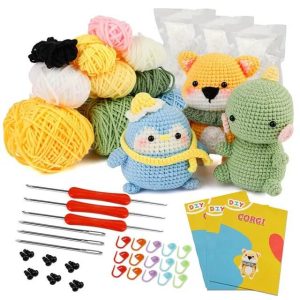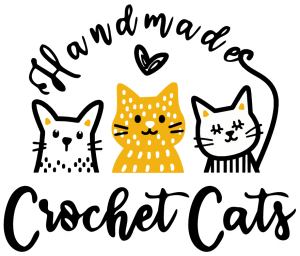Ultimate Guide to the Treble Crochet Stitch (TR): Tutorials, Tips, and Project Ideas
The treble crochet stitch (TR) is a beginner-friendly stitch in crochet. Known for its unique height, it is a favorite among crocheters for projects ranging from cozy blankets and hats to dishcloths and scarves. This guide provides an extensive overview of the treble crochet stitch, including everything from a step-by-step tutorial to creative ways to incorporate TR in advanced projects.
In this comprehensive guide, you’ll learn everything about treble crochet, including:
- What is the treble crochet stitch?
- Materials needed for treble crochet
- Step-by-step instructions
- Common mistakes to avoid
- Tips for mastering the treble crochet stitch
- Popular projects using treble crochet
- Advanced techniques and variations
- Troubleshooting common issues
- FAQs about treble crochet

What is the Treble Crochet Stitch?
The treble crochet stitch is a unique, tall stitch commonly used to add height and texture to crochet projects. This stitch, also known as the triple crochet stitch (abbreviated as “tr” in US terminology), creates an open, airy structure that works well for blankets, shawls, scarves, and other designs that benefit from a looser stitch.
The treble crochet stitch is one of the tallest basic stitches, so each row builds height quickly. By wrapping the yarn twice around the hook before beginning, the treble crochet gives a lacy, open pattern that is great for creating decorative effects, especially when paired with shorter stitches in a pattern. This is why it’s a favorite choice in patterns like granny squares, shells, and cluster stitches.
Benefits of the Treble Crochet Stitch
Characteristics of the Treble Crochet Stitch:
- Height: The TR stitch is taller than the double crochet stitch, which helps in creating airy and open fabric that is lightweight and perfect for warmer weather garments.
- Versatility: You can use treble crochet in various patterns and textures, making it an essential stitch in any crocheter’s toolkit.
- Open Fabric: This stitch is excellent for creating lacy designs and is often used in projects like shawls, wraps, and summer garments.
The treble crochet stitch can be worked into any row, making it easy to incorporate into existing patterns. Understanding how to execute this stitch correctly can elevate your crochet projects significantly.
Materials You’ll Need
To get started with the treble crochet stitch, here are the essential materials:
- Yarn: Most yarn weights work well with Treble Crochet, but medium-weight (size 4) yarn is ideal for beginners.
- Crochet Hook: Choose the hook size recommended on your yarn label.
- Scissors: Essential for trimming yarn at the end of your project.
- Tapestry Needle: For weaving in yarn ends and finishing touches.
- Stitch markers: Help you keep track of specific points within your work.
- Measuring Tape: For measuring your work to ensure it meets your desired dimensions.

Selecting Yarn for Treble Crochet
When selecting yarn for your treble crochet projects, consider the following:
- Weight: For beginners, a worsted weight yarn is ideal because it is easy to handle and offers great stitch definition.
- Fiber Content: Wool, cotton, and acrylic yarns all work well. Wool provides warmth, cotton is breathable for summer garments, and acrylic is budget-friendly and versatile.
- Color and Texture: Experiment with different colors and textures. Variegated or self-striping yarns can add interesting visual effects to your projects.
Choosing the Right Hook
The size of the crochet hook affects the appearance of your treble crochet stitch. A larger hook results in looser stitches, while a smaller hook creates tighter, more defined stitches. As a general guideline:
- For Worsted Weight Yarn: Use a hook size between 5.5mm (I-9) and 6.5mm (K-10.5).
It’s also beneficial to use a hook made from a material that you feel comfortable with. Options include aluminum, plastic, or bamboo, each providing a different grip and feel.
Step-by-Step Tutorial for Treble Crochet Stitch
Here is a more detailed step-by-step tutorial to get comfortable with this stitch:
-
Begin with a Foundation Chain: Start by creating a foundation chain that matches your desired length. For practice, start with 20 chains. Add four extra chains at the end to count as your first treble crochet stitch.
-
Yarn Over Twice: Wrap the yarn around your hook two times. You should now have three loops on your hook.
-
Insert the Hook into the Stitch: Insert your hook into the fifth chain from the hook. Skipping the first four chains gives space for the first treble stitch.
-
Yarn Over Again and Pull Through: Wrap the yarn over your hook once more, then pull it through the stitch. You should now have four loops on your hook.
-
Pull Through Two Loops: Yarn over again, and pull through the first two loops on the hook. You’ll have three loops remaining on the hook.
-
Repeat the “Pull Through Two Loops” Step: Yarn over and pull through the next two loops, leaving two loops on the hook.
-
Complete the Stitch: Finally, yarn over once more and pull through the last two loops on the hook. You should have only one loop on your hook now.
-
Repeat Across the Row: Continue the process for each stitch in the foundation chain. When you reach the end of the row, turn your work.
-
Start the Next Row: To begin the next row, chain four (this counts as your first treble stitch). Continue with treble stitches across, inserting your hook into each stitch.
-
Sale!

Daffodil Crochet Garland Pattern
£5.50Original price was: £5.50.£4.50Current price is: £4.50. Add to basket -
Sale!

Daffodil Crochet Granny Square
£5.50Original price was: £5.50.£4.50Current price is: £4.50. Add to basket -
Sale!

Full Of Heart Single Crochet Blanket Pattern
£5.50Original price was: £5.50.£4.50Current price is: £4.50. Add to basket -
Sale!

Heart Granny Square
£3.50Original price was: £3.50.£2.50Current price is: £2.50. Add to basket
Common Mistakes to Avoid with Treble Crochet
Many beginners encounter a few common pitfalls when learning treble crochet. Here’s how to avoid them:
- Skipping Chains at the Start of the Row: The initial four chains at the start of each row act as the first treble crochet stitch, so always remember to count them as such.
- Inconsistent Tension: Treble crochet requires a steady hand; too much tension can make the stitches too tight, while too little will make them loose and messy. Practice adjusting your hold until it feels comfortable.
- Not Pulling Through All Loops: Each treble crochet requires you to pull through two loops at a time three times. Missing a loop will leave an incomplete stitch.
- Skipping Stitches by Accident: With treble crochet, the stitches can look tall and loosely spaced, so counting each stitch as you go along can help prevent missed stitches.

Top Tips for Perfecting Your Treble Crochet
Here are some advanced tips that will help you achieve consistency and precision with treble crochet:
-
Experiment with Yarn and Hook Sizes: Some yarn types, like cotton, create a more defined treble stitch, while soft acrylic can be more forgiving. Try both and see which you prefer.
-
Practice Row Counting: Treble stitches are tall, which makes it easy to lose track of row counts. Practice counting stitches at the end of each row to prevent uneven edges.
-
Learn the Correct Yarn Tension: A relaxed but steady yarn tension helps create uniform stitches. If you find yourself pulling too hard or keeping your loops too loose, try adjusting your grip or using a different hook.
-
Mark Your First Stitch in Each Row: Using a stitch marker for the first stitch helps beginners keep track and prevents confusion as you continue working rows.
-
Practice in Patterns: Try the treble crochet stitch in combination with other stitches, like single or double crochet. This helps you get comfortable with various stitch heights and understand how they affect the fabric.
Project Ideas Using Treble Crochet Stitch
The versatility of treble crochet lends itself to various fun projects. Here are some project ideas to inspire you:
- Shawls and Wraps: Treble crochet is ideal for lightweight shawls, adding a delicate, lacy effect that drapes beautifully.
- Scarves with Texture and Height: With treble crochet, scarves work up quickly and create a lovely, airy look.
- Summer Beach Cover-Ups: The openness of treble crochet gives it the perfect texture for light and breathable garments.
- Blankets and Afghans: Create cozy and warm blankets with treble crochet. Because treble stitches are so tall, they cover more ground quickly, perfect for larger projects.
- Bags and Market Totes: Treble crochet can add style to a bag, making it lightweight but sturdy, ideal for market bags and totes.

Advanced Treble Crochet Techniques and Variations
Once you’ve got the basics down, try some of these advanced treble crochet techniques to add flair to your projects:
-
Front and Back Post Treble Crochet: In this variation, instead of working into the top loops, insert the hook around the “post” of the stitch from the previous row, either from the front or back. This adds a raised texture and creates a ribbed effect.
-
Treble Crochet Clusters: This technique involves working multiple treble stitches together in the same stitch, which creates a cluster. This is often used to make fans, shells, and other decorative effects.
-
Crossed Treble Crochet: This technique creates a crossed look by skipping a stitch, making a treble stitch, then going back and making a treble crochet in the skipped stitch.
-
Treble Crochet in the Round: Instead of working rows back and forth, work in continuous circles to create circular motifs, perfect for rugs, mandalas, or hats.
-
Treble Crochet Shell Stitch: In this variation, you work several treble crochets into one stitch to form a shell or fan shape, which is often used in lacey or scalloped patterns.

Troubleshooting Treble Crochet
Sometimes, even seasoned crocheters experience issues with treble crochet. Here are some solutions to common problems:
-
Loose or Gaping Stitches: Treble crochet stitches are naturally loose due to their height, but overly loose stitches can make your work look messy. If this happens, consider using a smaller hook to tighten the stitches.
-
Unwanted Gaps Between Stitches: Gaps can form if the tension is too loose or if you skip chains when you shouldn’t. Check your chain count, especially at the beginning of each row.
-
Uneven Edges: If your edges aren’t straight, you may be forgetting the turning chain or accidentally adding extra stitches. Remember to chain four at the beginning of each new row and count your stitches regularly.
-
Stitch Misalignment: If your stitches don’t align properly, double-check that you’re starting in the correct chain. For treble crochet, this is usually the fifth chain from the hook at the beginning.
FAQs About the Treble Crochet Stitch
Q1: Is treble crochet hard to learn?
A: Treble crochet can be a bit tricky at first, but with practice, it becomes easier. Following the steps carefully and practicing often can help you master it quickly.
Q2: Can treble crochet be used with other stitches?
A: Absolutely! Combining treble crochet with other stitches like double and single crochet creates interesting textures and patterns.
Q3: How do I keep my stitches even?
A: Maintaining even stitches takes practice. Try using a larger hook and adjusting your yarn tension as you get more comfortable.
Q4: What’s the difference between UK and US terms for treble crochet?
A: In US terms, treble crochet is called triple crochet. In UK crochet terminology, treble refers to what Americans call double crochet, so be mindful when following patterns from different regions.
Q5: Can treble crochet be used for amigurumi?
A: Typically, no. Amigurumi requires tight, dense stitches to hold stuffing, which is difficult to achieve with treble crochet due to its height and openness.
With this in-depth guide, you should feel confident about diving into treble crochet! Enjoy exploring all the creative possibilities this stitch offers and have fun experimenting with new projects. Happy crocheting!
Mastering the treble crochet stitch opens up a world of possibilities for your crochet projects. Whether you’re creating cozy blankets or stylish garments, this versatile stitch can elevate your work. Remember to practice consistently, use the tips provided, and don’t hesitate to experiment with advanced techniques as you grow in your crochet journey. Happy crocheting!
Crochet Patterns
-
Sale!

Daffodil Crochet Garland Pattern
£5.50Original price was: £5.50.£4.50Current price is: £4.50. Add to basket -
Sale!

Daffodil Crochet Granny Square
£5.50Original price was: £5.50.£4.50Current price is: £4.50. Add to basket -
Sale!

Full Of Heart Single Crochet Blanket Pattern
£5.50Original price was: £5.50.£4.50Current price is: £4.50. Add to basket -
Sale!

Heart Granny Square
£3.50Original price was: £3.50.£2.50Current price is: £2.50. Add to basket
Accessories
-

10 x Golden Touch Crochet Hook Set, 2-6.5mm
£19.00 Add to basket -

10 x Rainbow Bliss Crochet Hook Set, 2-6.5mm
£19.00 Add to basket -

14 x ColorSplash Crochet Hook Set With Case, 2.25-10mm
£24.00 Add to basket -

3x Amigurumi Crochet Kit – Fox, Elephant, Dinosaur
£15.00 Add to basket -

3x Amigurumi Crochet Kit – Penguin, Teddy, Dinosaur
£15.00 Add to basket -

5 x BlossomCraft Floral Crochet Hook Set, 6.5mm-7mm-8mm-9mm-10mm
£14.00 Add to basket -

8 x Fox Lightweight Crochet Hook Set, 2.5-6mm
£18.00 Select options This product has multiple variants. The options may be chosen on the product page -

9 x Beautiful Mermaid Crochet Hook Set, 2.25-6.5mm
£18.00 Add to basket































